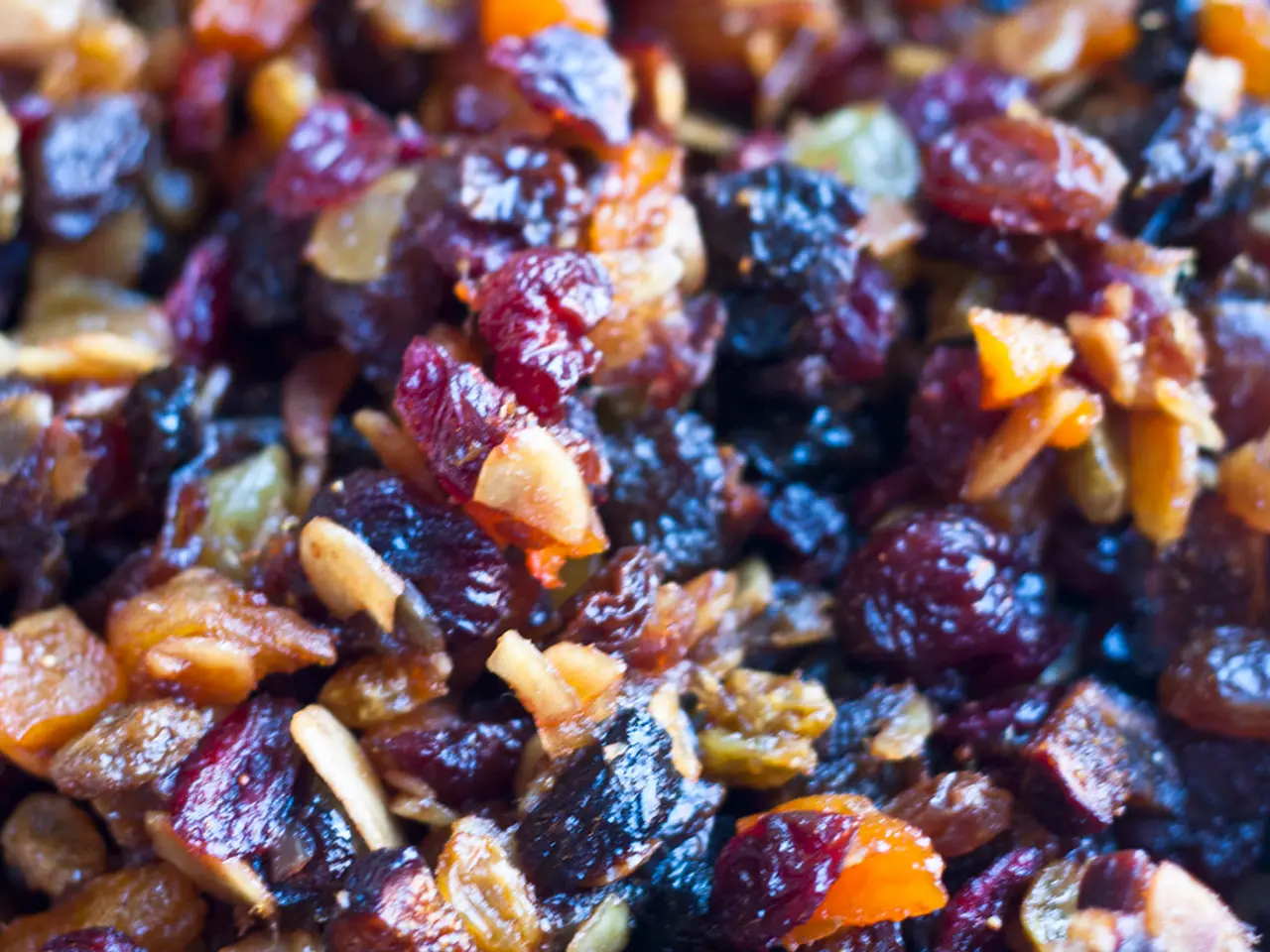Six advantages of farro for dietary needs, weight management, and additional health aspects.
In the realm of whole grains, farro stands out as a nutritious and versatile choice. This ancient grain, commonly sold as emmer in the United States, is packed with essential nutrients that make it a valuable addition to any diet.
Farro differs nutritionally from rice, quinoa, and barley primarily in its protein content, fiber, and calorie profile. For instance, a cooked cup of farro provides approximately 12 grams of protein, making it a good plant-based protein source. This is higher than quinoa (8 grams per cooked cup) and typically higher than most rice varieties. Barley has somewhat less protein than farro but is still a decent source.
When it comes to fiber, farro is on par with other whole grains. In fact, whole grain blends including farro, quinoa, and brown rice can offer more fiber per volume than whole wheat alone. Barley is also known to be high in fiber.
Calorie-wise, one cooked cup of farro has roughly 200 calories, which is moderate compared to other grains like kamut (about 250 calories per cup). Rice and quinoa tend to vary but are generally in the same calorie range per serving.
Farro is rich in minerals as well. It contains iron and other minerals, while quinoa is noted as a great source of iron, magnesium, zinc, and folate. Rice generally has fewer micronutrients unless fortified.
Emmer, the variety of farro commonly sold in the United States, contains antioxidants that may lower inflammation and reduce damage by free radicals. Additionally, a high-fiber diet, including farro, can contribute to healthy digestion and may have links with a reduced risk of colon cancer.
Farro is also a suitable source of antioxidants, which may lower inflammation and reduce damage by free radicals. Interestingly, ancient types of wheat, such as farro, have a higher protein content than modern varieties of wheat.
Quinoa, with its gluten-free status and specific mineral content, and barley, with its high fiber content, are worthy alternatives to farro, depending on dietary needs like gluten tolerance, protein requirements, and desired fiber intake. Other grains like barley, bulgur, and wheat berries have similar nutrient profiles to farro.
Farro has a low glycemic index, making it suitable for those with type 2 diabetes or prediabetes. Furthermore, a 2018 laboratory study found that North Dakota emmer grains had antihyperglycemic properties.
Moreover, fiber from whole grains, including farro, can help individuals feel full even if they are eating fewer calories. This can aid in weight management and overall health.
However, it's worth noting that many people, particularly women and men, are not meeting their daily fiber requirements. More than 90% of females and 97% of males do not get enough fiber in their diet. Incorporating whole grains like farro into your diet can help bridge this gap.
Farro can be purchased as whole grain, semi-pearled, or pearled, with whole grain having the best nutritional profile. Emmer also contains several important vitamins and minerals, including vitamin B3 (niacin), zinc, magnesium, and iron.
In conclusion, farro is a nutrient-dense whole grain that offers a good balance of protein, fiber, and minerals. Its low glycemic index makes it a suitable choice for those with diabetes or prediabetes, and its high fiber content can contribute to healthy digestion and potentially reduce the risk of colon cancer. Emmer's antioxidant properties also offer additional health benefits. As with any dietary change, it's always a good idea to consult a healthcare professional to understand how farro might fit into your individual dietary needs.
- Incorporating farro into your diet can provide various health benefits, such as lowering inflammation due to its antioxidant content.
- When considering whole grains, farro is a nutritious and versatile choice, offering a good balance of protein, fiber, and minerals.
- Farro can aid in weight management and overall health by making individuals feel full with fewer calories.
- Farro is a suitable choice for those with diabetes or prediabetes due to its low glycemic index.
- Farro, when consumed in its whole grain form, provides a better nutritional profile compared to semi-pearled or pearled varieties.
- Dietary fiber from whole grains like farro can potentially lower the risk of colon cancer.
- Whole grain blends including farro, quinoa, and brown rice can offer more fiber per volume than whole wheat alone.
- The variety of farro commonly sold in the United States, emmer, contains several important vitamins and minerals like vitamin B3, zinc, magnesium, and iron.
- Compared to quinoa and most rice varieties, farro has a higher protein content per cooked cup.
- For those following a gluten-free diet, quinoa can be a worthy alternative to farro.
- Ancient types of wheat, such as farro, have a higher protein content than modern varieties of wheat.
- incorporating farro into your lifestyle can contribute to personal growth, such as through improved health-and-wellness, mindfulness, and productivity, as well as career-development, job-search, and goal-setting.
- When learning to cook and prepare global cuisines, healthy-cooking techniques like low-fat cooking, steam-cooking, grilling, and baking can be paired with farro to create nutritious and delicious dining experiences, including a variety of beverages, food-and-drink options, and skin-care routines, that align with a holistic lifestyle focused on education-and-self-development and CBD as a complementary therapy for health-and-wellness.




